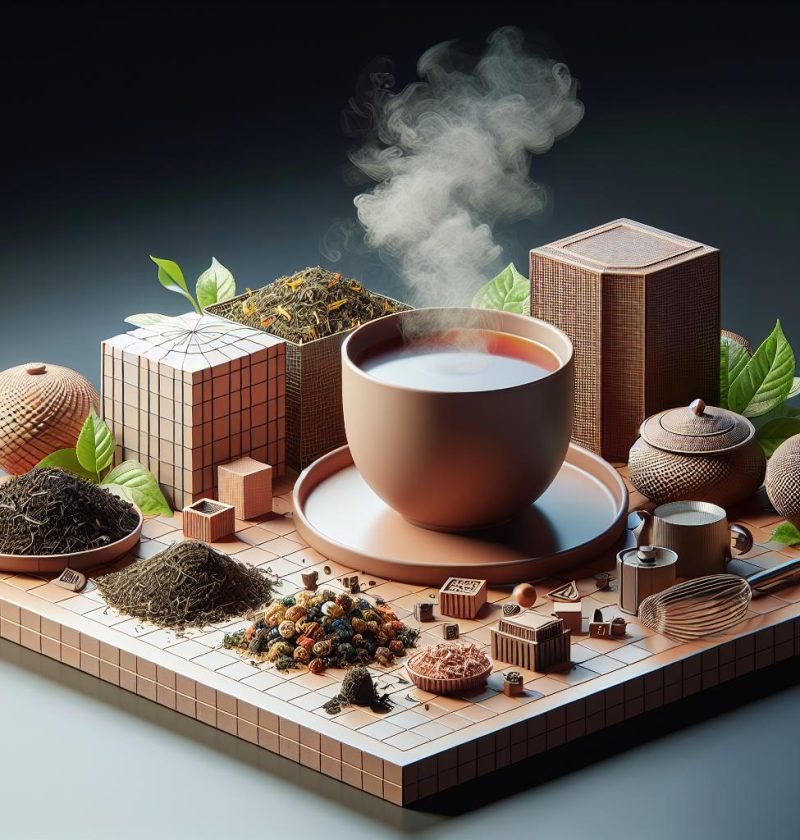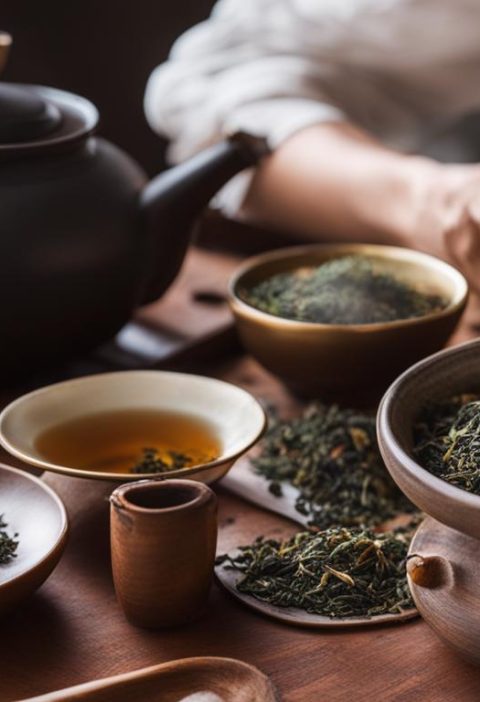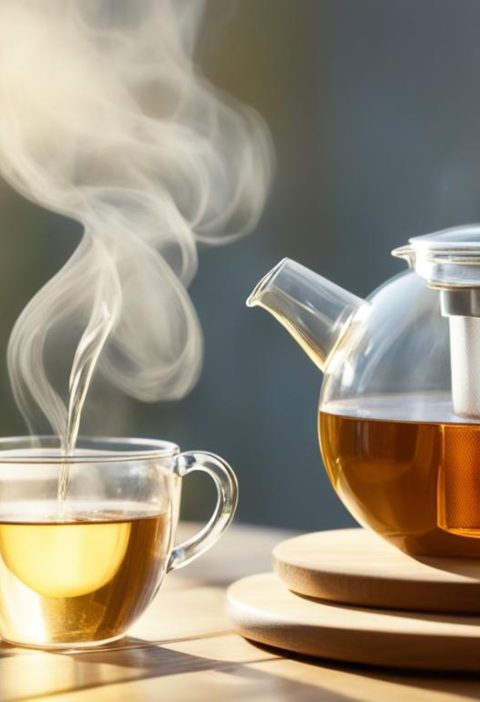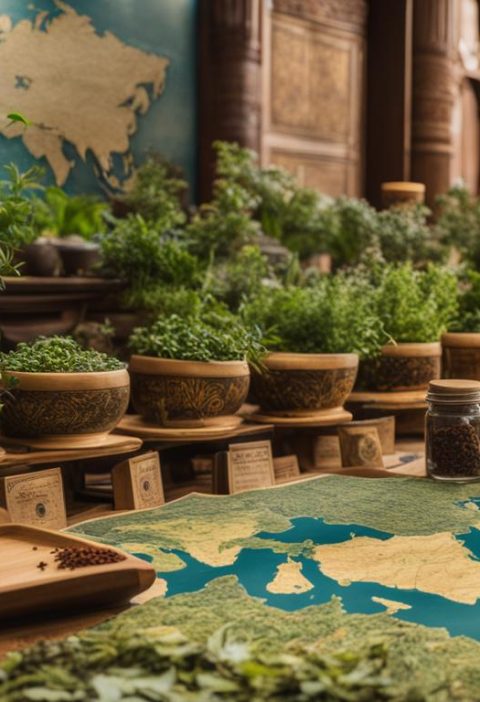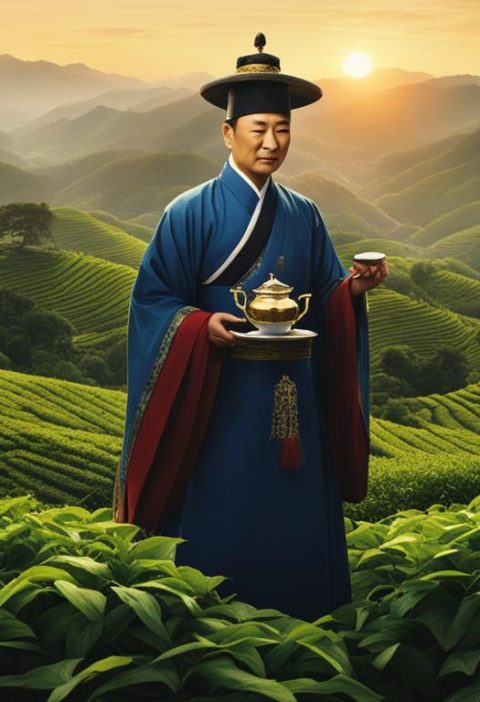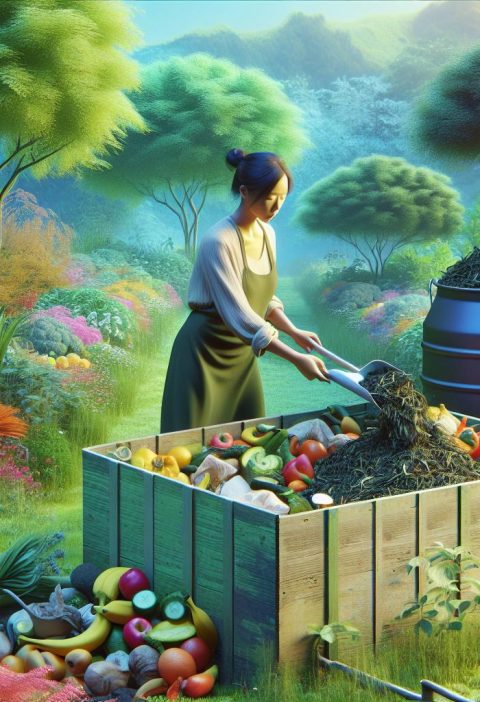So, we’re diving into the wonderful world of loose tea steeping today. When it comes to brewing the perfect cuppa, the aroma is just as important as the taste. That’s why mastering the art of steeping loose tea for maximum aroma is a game-changer. Whether you’re a tea enthusiast or just starting your journey, this guide will walk us through the steps to elevate our tea experience to a whole new level.
First things first, the key to unlocking the full potential of loose tea lies in the steeping process. By allowing the leaves to dance in hot water, we release a symphony of fragrances that can transport us to tea paradise with every sip. From floral notes to earthy undertones, each tea has its own unique aroma profile waiting to be unleashed. So, grab your favorite loose leaf blend, and let’s embark on this aromatic journey together.
Join us as we explore the tips and tricks to enhance the aroma of our favorite loose teas. With a few simple techniques and a dash of patience, we can savor every delightful scent that our tea has to offer. Get ready to elevate your tea game and indulge in a sensory experience like never before.
Understanding the Importance of Aroma in Tea
For Beginners: Grasping the Basics
- Aroma greatly influences the overall tea-drinking experience.
- Different types of tea offer distinct aromas based on their processing.
- Start by smelling the dry leaves to get a sense of the tea’s aroma profile.
- Pay attention to how the aroma changes as you go through the steeping process.
For Intermediate Tea Enthusiasts: Enhancing Your Senses
- Experiment with different water temperatures to alter aroma intensity.
- Consider using aroma cups to focus solely on the fragrance of the tea.
- Explore scenting techniques such as adding herbs or flowers for a unique aroma twist.
- Take notes on the aromas you perceive to develop a deeper sensory memory.
- Delve into the world of tea aroma classification to identify key scent profiles.
- Invest in specialized tea ware designed to enhance aroma retention.
- Participate in tea aroma workshops to refine your olfactory skills.
- Incorporate aroma blending to create customized tea experiences tailored to your preferences.
| Key Point | Description |
|---|---|
| Certification for Tea Aroma Experts | Obtain certification in tea aroma evaluation. |
| Aroma Recognition Workshops | Attend workshops focused on recognizing tea aromas. |
| Handcrafted Aroma Blends | Create unique handcrafted aroma blends for personalized experiences. |
| Aromatic Tea Tastings | Engage in aromatic tea tastings to refine your sensory skills. |
Selecting the Right Loose Tea for Steeping

For Beginners: Understanding the Basics
- Start with popular loose teas like green tea and oolong tea.
- Choose loose teas with natural floral or fruity notes for a milder aroma.
- Opt for whole leaf teas to experience a more robust flavor.
For Intermediate Tea Enthusiasts: Exploring Varieties and Flavors
- Experiment with single-origin loose teas to appreciate unique regional aromas.
- Consider blooming teas for a visually stunning and aromatic steeping experience.
- Look for aged loose teas for complex and deep aromas.
- Explore Pu-erh and White teas for distinctive aromas and flavors.
- Source handcrafted artisan teas for a personalized aromatic journey.
- Invest in rare and vintage loose teas for a truly exceptional aroma experience.
Feel free to expand your loose tea collection based on your preference and desired aroma intensity.
Optimal Water Temperature for Steeping Loose Tea
When it comes to unlocking the maximum aroma from your loose tea, water temperature plays a crucial role. Whether you are a novice tea enthusiast or a seasoned connoisseur, getting the water temperature just right can make a significant difference in the flavor profile of your brew.
For Beginners: Getting Started on the Right Foot
- Green Tea: Opt for a water temperature around 160°F to 180°F to bring out the delicate flavors without extracting unwanted bitterness.
- White Tea: Aim for a slightly higher temperature range between 175°F to 185°F to highlight the subtle sweetness and floral notes.
- Oolong Tea: Find the sweet spot between 185°F to 205°F to enhance the complex aromas and create a well-balanced brew.
For Intermediate Enthusiasts: Elevating Your Tea Experience
- Black Tea: Experiment with temperatures ranging from 205°F to 212°F to extract the bold flavors and robust characteristics that black tea offers.
- Herbal Tea: Vary the temperature between 205°F to 212°F based on the herbal blend to accentuate the diverse flavors and therapeutic benefits.
- Blooming Teas: Use water temperatures around 180°F to 200°F to witness the mesmerizing blooming effect and savor the delicate floral notes.
- Pu-erh Tea: Embrace temperatures from 200°F to 212°F to unlock the earthy richness and depth of aged Pu-erh teas.
- Rare Vintage Teas: Delve into the nuanced realm with precise temperatures tailored to each unique vintage for a truly exceptional tea-drinking experience.
- Artisan Teas: Consult the tea master’s recommendations for specific water temperatures that highlight the craftsmanship and dedication infused into each artisan blend.
Remember, adjusting the water temperature based on the type of loose tea ensures that you extract the ideal flavors and aromas for a truly delightful tea steeping experience.
Time and Technique: The Steeping Process
Steeping loose tea is an art that requires precision and care. The time and technique you employ can greatly impact the aroma and flavor of your brewed tea. Let’s delve into the details based on different experience levels to help you achieve the perfect cup every time.
For Beginners: Mastering the Basics
- Use a timer to ensure consistency in steeping times.
- Follow recommended steeping times for different types of tea:
- Black Tea: 3-5 minutes
- Green Tea: 2-3 minutes
- White Tea: 4-5 minutes
- Gently swirl the tea leaves in the water to enhance infusion.
- Avoid oversteeping to prevent bitterness in your tea.
For Intermediate Enthusiasts: Elevating Your Brew
- Experiment with water temperatures to unlock varying flavor profiles.
- Consider using a tea infuser or teapot for better control.
- Explore different steeping methods like grandpa style or gongfu brewing.
- Adjust steeping times based on personal taste preferences.
- Fine-tune your brewing process by focusing on water quality.
- Opt for multiple infusions to experience the tea’s evolving flavors.
- Dive into the world of rare vintage and artisan teas for a unique experience.
- Embrace traditional tea ceremonies for a holistic approach to tea appreciation.
Remember, the key to a delightful steeping experience lies in understanding the nuances of time and technique. Whether you’re a novice or a seasoned tea connoisseur, our tailored recommendations can help you unlock the full potential of your loose leaf tea.
Enhancing Aroma with Creative Steeping Methods

For Beginners: Mastering the Basics
- Start by experimenting with different tea types to understand their unique aromas.
- Use fresh, filtered water for the best flavor extraction.
- Invest in a good quality tea infuser or teapot for convenience.
- Follow steeping instructions on tea packaging for optimal results.
- Keep track of steeping time using a timer to avoid bitter or weak brews.
For Intermediate Enthusiasts: Elevating Your Tea Experience
- Dive into the world of temperature control with electric kettles or thermometers.
- Explore unconventional steeping methods like cold brewing or gongfu style.
- Consider using organic teas for a more natural and aromatic infusion.
- Experiment with herbal or floral additions to enhance the tea’s fragrance.
- Infuse your personality into the process by creating custom tea blends.
- Delve into the tradition of tea ceremonies to elevate the sensory experience.
- Source rare, vintage teas to appreciate the depth and complexity of flavors.
- Focus on water mineral content to bring out the nuances in premium teas.
- Embrace multiple infusions to unravel the layers of flavor in high-quality teas.
- Share your passion by hosting tea tasting events or workshops for fellow enthusiasts.
Key Tip: Experimentation is key to discovering unique aroma profiles that cater to your personal preferences and sensory delight.
| Beginners | Intermediate | Experts |
|---|---|---|
| Fresh, filtered water | Temperature control | Rare, vintage teas |
| Good quality tea infuser | Unconventional methods | Water mineral content |
| Timer for steeping | Organic teas | Multiple infusions |
| Initial tea experimentation | Herbal or floral additions | Tradition of tea ceremonies |
Conclusion
Exploring various steeping techniques can unlock a world of aromatic possibilities in your tea experience. From trying different tea types to experimenting with temperature and water quality, each step contributes to enhancing the flavors and aromas in your cup. Embracing tea ceremonies, sampling rare teas, and focusing on water mineral content can elevate your tea journey to new heights. Remember, the art of steeping is a personal journey of discovery, where each infusion reveals a unique flavor profile waiting to be savored. So, let’s continue our exploration of steeping methods to uncover the full potential of our favorite teas.
